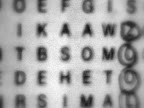Thinking about lines
In regards to sequester furloughs, such as at Customs and Border Protection, the White House says: "At the nation’s busiest airports, like Newark, JFK, LAX, and Chicago O’Hare, peak wait times could grow to over 4 hours or more."
Indeed: if you furlough some people, so you have fewer agents working, the line is going to build up during the day and get longer and longer.
But remember that this first step doesn't guarantee that the government actually saves money. If you still have the same planes coming in, and they're still as full as they were the week before, then the line builds up and gets longer over the course of the day, as the throughput is lower than it used to be, while the input is the same. So, late in the day, the line is still there, unusually long and unusually late into the evening, and doesn't go away altogether until later at night.
The government is still processing the same number of people entering the country; you still need the same total agent-hours. Whether you pay 20 agents to work 10 hours or only pay 10 agents -- but then they have to work 20 hours -- would make no difference spending wise. (I'm simplifying here).
The government starts saving money only if and when you reach the second step: the lines are so long that people find out about it, and cancel their trips to the United States. Then the agent-hours the government has to pay for actually start to decrease.
Lines are weird. We usually don't think about them very well. With "short" lines, the situation is determined mostly by the input, the output, and how much line had already built up. With longer lines, the input starts to get affected (if people have information about the length of the line), making a very different dynamic.
How long the lines will be, and how much money the government will actually save, will depend on how good information people get about those lines and what they decide to do with it.


0 Comments:
Post a Comment
<< Home